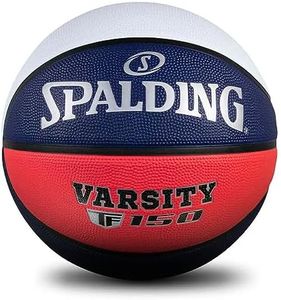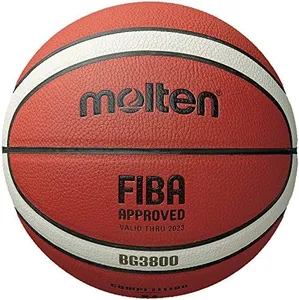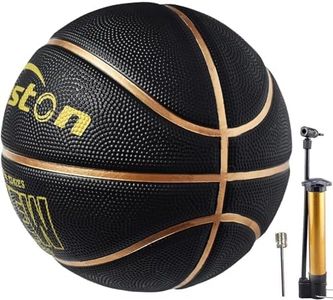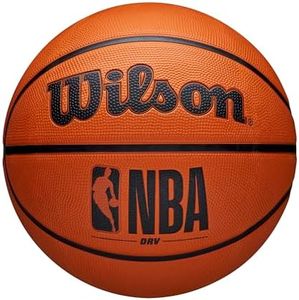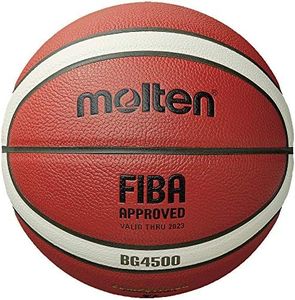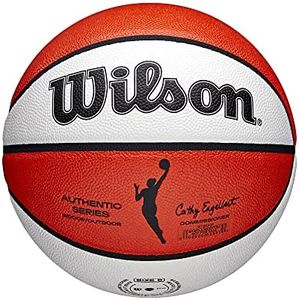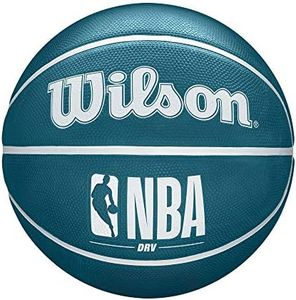We Use CookiesWe use cookies to enhance the security, performance,
functionality and for analytical and promotional activities. By continuing to browse this site you
are agreeing to our privacy policy
10 Best Outdoor Basketballs
From leading brands and best sellers available on the web.Buying Guide for the Best Outdoor Basketballs
Choosing the right outdoor basketball can really improve your game experience and help the ball last much longer even on rough surfaces. Outdoor basketballs are specially designed to handle concrete, asphalt, and other hard courts, but with so many options out there, making the right choice can seem tough. It's important to think about what features matter most to your style of play, how frequently you'll use the ball, and what feels good in your hands. Understanding the basics of each key feature will make comparing options much easier and ensure you end up with a ball that feels right and stands up to the outdoor conditions.MaterialThe material of a basketball is crucial because it affects the ball's durability and feel. For outdoor use, basketballs are usually made from rubber or composite leather. Rubber balls are very tough and can handle rough surfaces well, making them good for recreational use and for players who often play on public outdoor courts. Composite leather feels closer to what you might find in a professional ball and provides better grip and control, but it may wear out faster on rough surfaces compared to rubber. If you want a ball that lasts, go with rubber. If performance and grip are more important, and you don’t mind replacing the ball from time to time, consider composite leather.
SizeBasketball size is not just about comfort; it's about ensuring it suits your hands and the official standards for your age or gender. Common sizes include Size 7 (29.5 inches) for adult men, Size 6 (28.5 inches) for women and teenagers, and Size 5 (27.5 inches) for children. For younger children, smaller sizes are available. Pick a size that matches your age group and hand size to make sure you can control the ball easily and shoot comfortably. Using the right size improves skill development and reduces the chance of injury.
Grip/TextureGrip or texture refers to how well the ball handles in your hands, which affects dribbling, passing, and shooting. Outdoor basketballs usually have deeper or more pronounced grooves to help with grip as your hands get sweaty or the ball picks up dust. If you often play in hot or humid weather, or your hands tend to get slippery, prioritize grip. Try holding and bouncing the ball in-store if possible, or check for mentions of 'enhanced grip' in descriptions. Choose the one that feels comfortable and secure without slipping.
Bounce ConsistencyBounce consistency means the ball bounces evenly and predictably each time. This is influenced by the cover material and the quality of the inner bladder, which holds the air. A good outdoor basketball should bounce true on a rough court without feeling flat or erratic. If you're practicing serious moves and want realistic game-play, look for balls that mention 'consistent bounce' or 'deep channels' as these tend to help. To check at home or in-store, simply bounce the ball a few times; it should not feel dead or too bouncy and should return to your hand at the expected height.
DurabilityDurability is all about how well the ball can take a beating from rough surfaces and constant use. Outdoor courts are much harsher on basketballs than indoor courts. Rubber balls generally last longer because they are hard-wearing, while composite leather ones will show signs of wear faster if used only outdoors. If you play often, especially on very rough ground, durability should be your main consideration. If you occasionally play outside or plan to use the ball indoors too, you can afford to pick a ball with a softer feel and less emphasis on toughness.

